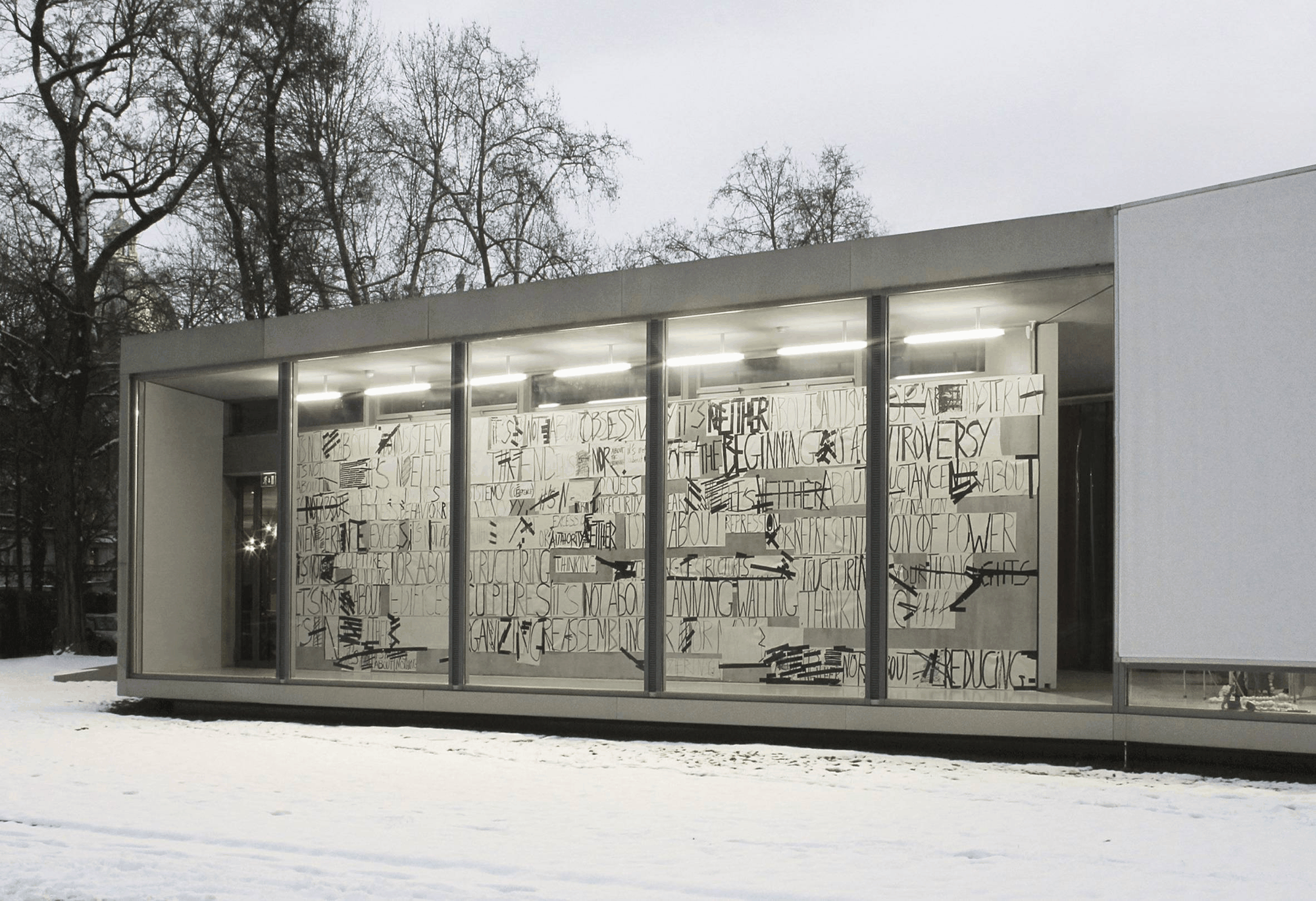Back to Tomorrow
16 Feb - 20 May 2013
Yvon Chabrowski (D), Dominique Gonzalez-Foerster (F), Wiebke Loeper (D), Inken Reinert (D), Anri Sala (AL, F), Michaela Schweiger (D), Maya Schweizer (D)
curated by Julia Schäfer and Heidi Stecker, GfZK
The exhibition combines construction and reconstruction, the fabrication of memory and the way in which it is outwardly presented. The resource of memory results from the past, but it is also a reference point for experience and learning related to the future. Images, patterns and models form and produce recollections. There are classical forms of media associated with memories: they are recorded in diaries and collected. Estates hold memories. Recollections are linked with spaces, form them, change as memory fades, are replaced with models that seem to correspond with prevailing social discourses. But memory and remembering are also governed and influenced by physical, neurological, medical factors.
Thus the exhibition is concerned both with the media involved in storing and archiving recollections and with an artistic reflection on history, which can also be of a private, personal, familiar nature. In the works of artists, recollections based on individual experience unfold. They point towards the fleetingness and changeableness of memory or relate to the reconstruction and restructuring of memory spaces.
Memory is the result of a command of language and power over the act of remembering. Who allows which memories to exist? Which of them are appropriate? Memory is subject to censorship and self-censorship. Ideas and ideologies shape, use and control them. Memory is constructed; the articulation, themes and interpretations of memories are governed by fashion and go in waves. Memories have blank spaces and leave unpleasant things out. But what is memory? What do we remember, and why? How do we construct memory? How do we find our orientation within it and what after-effects does it have? How do we remember places and spaces? Do spaces store thoughts and memories, do they reflect and collect them, can they serve as triggers?
curated by Julia Schäfer and Heidi Stecker, GfZK
The exhibition combines construction and reconstruction, the fabrication of memory and the way in which it is outwardly presented. The resource of memory results from the past, but it is also a reference point for experience and learning related to the future. Images, patterns and models form and produce recollections. There are classical forms of media associated with memories: they are recorded in diaries and collected. Estates hold memories. Recollections are linked with spaces, form them, change as memory fades, are replaced with models that seem to correspond with prevailing social discourses. But memory and remembering are also governed and influenced by physical, neurological, medical factors.
Thus the exhibition is concerned both with the media involved in storing and archiving recollections and with an artistic reflection on history, which can also be of a private, personal, familiar nature. In the works of artists, recollections based on individual experience unfold. They point towards the fleetingness and changeableness of memory or relate to the reconstruction and restructuring of memory spaces.
Memory is the result of a command of language and power over the act of remembering. Who allows which memories to exist? Which of them are appropriate? Memory is subject to censorship and self-censorship. Ideas and ideologies shape, use and control them. Memory is constructed; the articulation, themes and interpretations of memories are governed by fashion and go in waves. Memories have blank spaces and leave unpleasant things out. But what is memory? What do we remember, and why? How do we construct memory? How do we find our orientation within it and what after-effects does it have? How do we remember places and spaces? Do spaces store thoughts and memories, do they reflect and collect them, can they serve as triggers?

